“Letters to Mother”
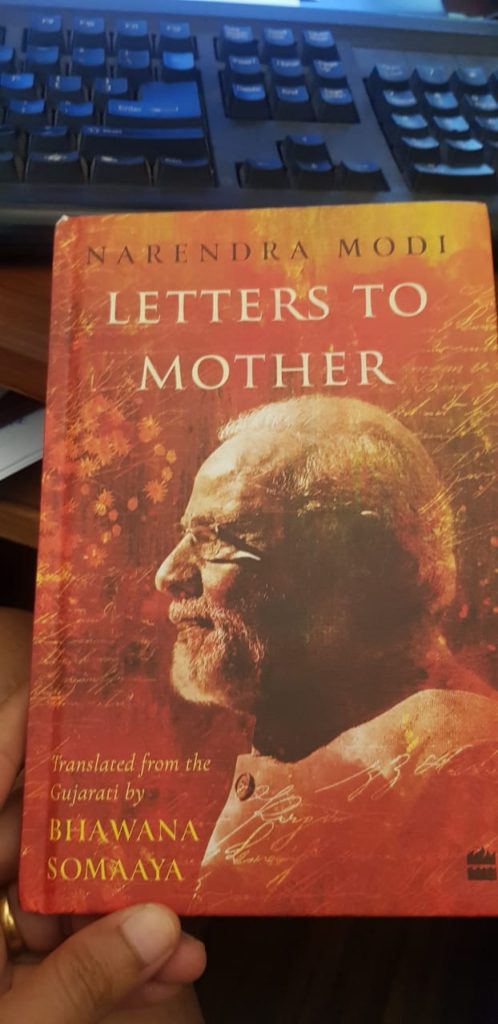
New age publishing in India = celebrity publishing.
This is the latest offering from HarperCollins India.
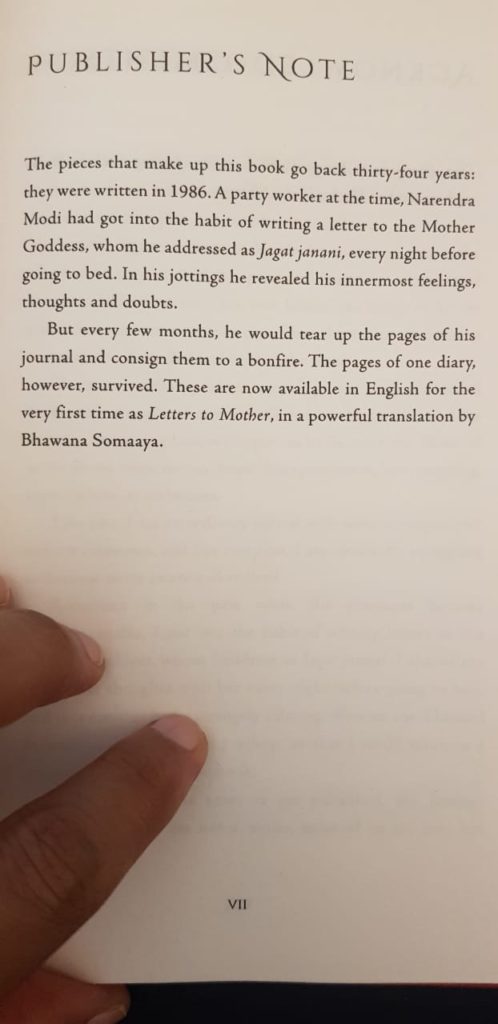
19 June 2020

New age publishing in India = celebrity publishing.
This is the latest offering from HarperCollins India.

19 June 2020
It is not very easy to read while the lockdown is on but I have managed a wee bit. The following are only some of the books I managed to read in April. Many others that I read I wrote about in separate blog posts. As always it is an eclectic collection.
Stephen and Lucy Hawking’s The Universe: Everything you need to travel through Space and Time is a brilliant collection of essays about the universe. It begins with a beautiful but very brief essay by Professor Stephen Hawking, “The Creation of the Universe” where he simply and clearly tries to explain the origins of Universe, packing it with concepts too. The contributors to the volume consist of eminent scientists, some Nobel Prize winners too, and a school student, Nitya Kapadia. The range of topics is extraordinary — understanding the origin of life, the Big Bang theory, idea of Space, travelling through the Universe, the idea of Relativity, from the solar system, the planets, speculating about life in space, Zero-Gravity Flights, Time Travel, wormholes, the Goldilocks zone, the geographical structures on Earth, Artificial Intelligence, Robot Ethics, 3D Printing, Internet Privacy, Quantum Computers etc. The template set by the late Prof. Hawking is the blueprint for the subsequent essays in the book. It makes science so easily accessible for young and adults alike. ( Confession time: My 10 yo daughter and I have been taking turns to read this book as both of us are fascinated by complicated subjects explained ever so simply!)
Scientific discoveries do not necessarily happen always in a staid manner, in controlled laboratory conditions. S D Tucker’s fascinating book Forgotten Science attempts to uncover the backstories of some of the extraordinary scientific applications that we take for granted in modern times. For instance, figuring out the circulatory system within an individual and the effect of medication if taken orally or injected directly into the bloodstream was discovered after experimenting upon dogs. These experiments were conducted by Robert Boyle (1627-91), often described as “the father of chemistry”, and Sir Christopher Wren (1632-1723), the anatomist, architect and designer of St Paul’s Cathedral to test William Harvey (1578-1657), court physician to Charles I, hypothesis about the circulatory system of various living creatures. Another equally bizarre and immoral experiment was carried out by Nazi doctor, Dr Sigmund Rascher ( 1909 – 45) to test the effects of high altitude and how to recover from hypothermia. Taking advantage of his close proximity to SS Head Heinrich Himmler ( 1900-45), Dr Rascher got permission to conduct experiments upon prisoners in Dachau concentration camp. In 1942 Rascher was given a pressure chamber and began locking prisoners inside to simulate the effects of high altitude upon Nazi airmen and parachutists. By altering pressure changes quickly or slowly, Rascher could mimic both gradual ascents and total freefall, and see what such states did to the human body. The effect upon the prisoners varied from exploding lungs, while others began to rip their own hears apart with bare hands due to the unbearable stress they felt inside their skulls. He killed about eighty prisoners in this ghastly manner but dismissed it as saying they were ‘only’ Poles and Russians. Some of his other experiments were on hypothermia, discovering the blood-clotting agent called Polygal and developed the cyanide capsule which later even Himmler took to avoid capture by the British. Ultimately Rascher too was incarcerated at Dachau for publicising the falsehood that he had extended the childbearing age of women and as proof he said his wife, touching fifty, had given birth to three babies, when in truth they had been kidnapped. Rascher was shot in April 1945. Several scientists who had worked with Rascher ended up working at NASA.
The next three books belong loosely to the category of science fiction — The Flight of the Arconauts by Sophia Khan ( steampunk fiction); The Sin Eaters by Megan Campisi and Analog Virtual by Lavanya Lakshminarayan. The Flight of the Arconaut is written at a nice pace. Neat dialogues. Interesting attempt at blending names to denote cultural melting pots. But it seems to have been heavily influenced by contemporary scifi young adult literature. It is also very desi in its telling by cramming the main narrative with so many stories and backstories. I see no reason why all must exist in the forefront. It is also inexplicable why must SpecFic, or in this case Steampunk Fiction, be so obsessed with conservative social rankings especially along gender lines? Why not break free? Also why is birth and regeneration such a massive preoccupation. It is as if it is impossible to think beyond the writing of H G Wells, Aldous Huxley et al. Sophia Khan’s saving grace is the packed dialogue and a superb grasp of the English language — LOVE IT! The second volume in this trilogy should be fun.
The Sin Eaters and Analog Virtual are debut novels. Both the writers seem to be voracious readers. Keenly imaginative writers too but not sufficiently confident enough to create landscapes of their own. While theatreperson Megan Campisi creates a parallel reality to Elizabethan England in The Sin Eater to explore the rumours of Queen Elizabeth I having had an illegitimate child. Campisi builds the premise of her story upon the social mobility a Sin Eater has within society and is able to pick up bits of information. So this part-mystery, part-historical fiction, is thrilling to read in parts with the strongest moments in storytelling being different scenes, much like the scenes enacted on stage. Usually the best moments in the novel are when the sin eater is in an enclosed space like a bedroom or a chapel attending a recitation or funeral and there are onlookers, replicating a play being enacted on stage, watched by an audience. Megan Campisi’s forte is theatre and not long fiction. But if she persists at this craft and attempts to write what her heart tells her to, she has the potential to do well. Much of this holds true for Lavanya Lakshminarayan who need to break the shackles of a well-read reader of science fiction and create with the assurance that resides deep within her, an imaginary landscape with its distinctive vocabulary, unique social structures, and a clear inner logic to the society she creates so that any reader coming to it for the first time will fall in love with her story. For now Virtual Analog is competent storytelling but no more. It may also fit snugly on the joint imprint that her publishers Hachette India have with Gollancz but Lavanya Lakshminarayan is capable of much, much more than what is displayed in Analog Virtual. What shines through the books is their keen imagination. They are creative writers whose confidence will soar with their third books. If they persist at this craft and attempt to write what their hearts tell them to, they have the potential to do well.
And then there are the two works of fiction — Meena Kandaswamy’s Exquisite Cadavers and Sarah Ladipo Manyika’s Like a Mule: Bringing Ice Cream to the Sun. Established writers. Controlled writing. Immersive reading experience. Meena Kandaswamy’s Exquisite Cadavers is an extraordinary reading experiment with parallel texts laid out on the pages — the main narrative and the interior monologue of the writer. Fascinating. It is a sophisticated cross between poetry and prose. Such books are meant to be experienced. In the old-fashioned sense. Linger over the pages. Dip into the text. Read along the margins. Shut the book. Mull over what one has read. Imbibe some more. Go back to a few lines. Meena Kandaswamy’s sense of rhythm as a poet has not left the prose. It is gorgeous! Her writings have always been infused with a ferocity that seems tto have been sharpened over the years but there is something special about this novel. Fifteen years down the line Exquisite Cadavers will be used a fine example of a literary text that will be read by the general reader as well as be a prescribed text. This is not a novel that will not be easily converted to an audio book — nor should it be. Likewise Sarah Ladipo Manyika’s novella about Morayo Da Silva, a seventy-five-year old Nigerian, living in San Francisco. She reflects upon her life as an academic, author and a diplomat’s wife. It is also a moving tale about ageing and suddenly being at the mercy of tender and well meaning care of others. Ladipo chooses an extraordinary literary technique of giving every character the first person narrative which at first is confusing but slowly adds up to the variety of perspectives and unsolicited advice Morayo gets upon her hospitalisation. The saddest part in the novel is when her kind young friend decides to tidy up Morayo’s apartment thereby ridding it off a clutter of books. Morayo is understandably upset, a hurt that many are unable to comprehend. It is a novel that criss-crosses continents — Africa, America and Asia. Irrespective of the land she is in, or when nostalgia hits her regarding Africa, Morayo’s levelheadedness always wins. It is a novel that cuts across cultures seamlessly and sensitively. There is never an awkward sense of looking at other cultures as “other”.
Lisa Taddeo’s Three Women and Jess Hill’s See What You Made Me Do are ( to use cliches) — mind blowing books. Both by journalists-turned-authors whose books were written after many years of intensive research and recording testimonies. Both these books will influence women’s writing, women’s movements, and all aspects of feminism in a manner similar to that of Simone de Beauvoir and Germaine Greer’s influence. Lisa Taddeo’s Three Women is about talking to three women about sex and desire for nearly eight years. It became a publishing sensation. While the subject itself would attract attention, it is the narrative, the confidence with which the subjects explore their own complicated reactions to sexuality. Significantly Three Women marks a watershed moment in contemporary women’s literature on how women talk about their sexual desires and needs. In many ways the strength of Lisa Taddeo’s is very similar to male writing, an unquestionable confidence. Jess Hill won the Stella Prize 2020 for Look What You Made Me Do. A title that probably gets lost as it is very similar to many of yalit and chiklit titles, but this title has a purpose with sinister underpinnings. It encapsulates the blame-game that inevitably every male perpetrator foists upon his female victim, usually said in a manner that fools the victim to believe the falsehood — she is too blame for the violence being meted out to her. In this particular book, Jess Hill focusses on domestic violence and her analysis of it is horrific. She breaks many myths about it being only restricted to certain socio-economic sections . Her profiling of the perpetrators is pathbreaking as she creates categories. Some of the men when they appear in court seem as if they can never hurt a fly and yet the incidents they are involved in are gut wrenching. Much of what she says is familiar to women activists and legal teams such as that violence is not necessarily always physical but emotional, psychological, financial etc. The manner in which the information is presented in Look What You Made Me Do will help this material in reaching to newer audiences. Women who either need help themselves or those close to victims. Both these powerful books are going to be seminal in the field of women/gender studies, human rights, manual for legal and counselling professionals.
The final book is the stupendously magical award-winning Lampie and the Children of the Sea. It has been written and illustrated by Dutch illustrator Annet Schaap. This is her first novel. It has already won the Woutertje Pieterse Prize, the Nienke van Hichtum prize, the Bookenleuw and the Gouden Griffel for the best Dutch children’s book of the year. It has been translated into English by Laura Watkinson. It is also the only translated book to have been shortlisted for the 2020 Carnegie Medal Award. It is a stunning modern fairy tale about a little girl, Lampie, living in a lighthouse with her father. Due to some unfortunate events Lampie is sent off to live in the Admiral’s home where it is rumoured a monster resides. It is a heartwarming tale as it is also a tale of Lampie overcoming prejudices and learning to live on her own terms, overcome hurdles and set goals for herself to achieve. The joy with which this story seems to have been written flows splendidly in the translation. It is truly magical to read it even in the moments when there is deep sadness and unnecessary violence. The imaginative plot matches the wild imagination that children are prone to creating for themselves. Yet Annet Schaap, an adult, an illustrator and a storyteller, pulls her strengths together of — an adult’s perspective on a child’s world sans judgement, creative imagination and a wide-eyed wonder at the power of stories to weave her magic. There are multiple layers to Lampie and the Children of the Sea. Whether the monsters in a child’s life are real or imaginary, they can be confronted and set free. It is a book that will appeal to adults and children alike!
14 May 2020
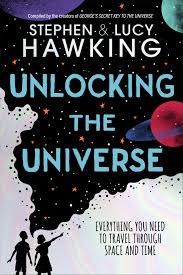
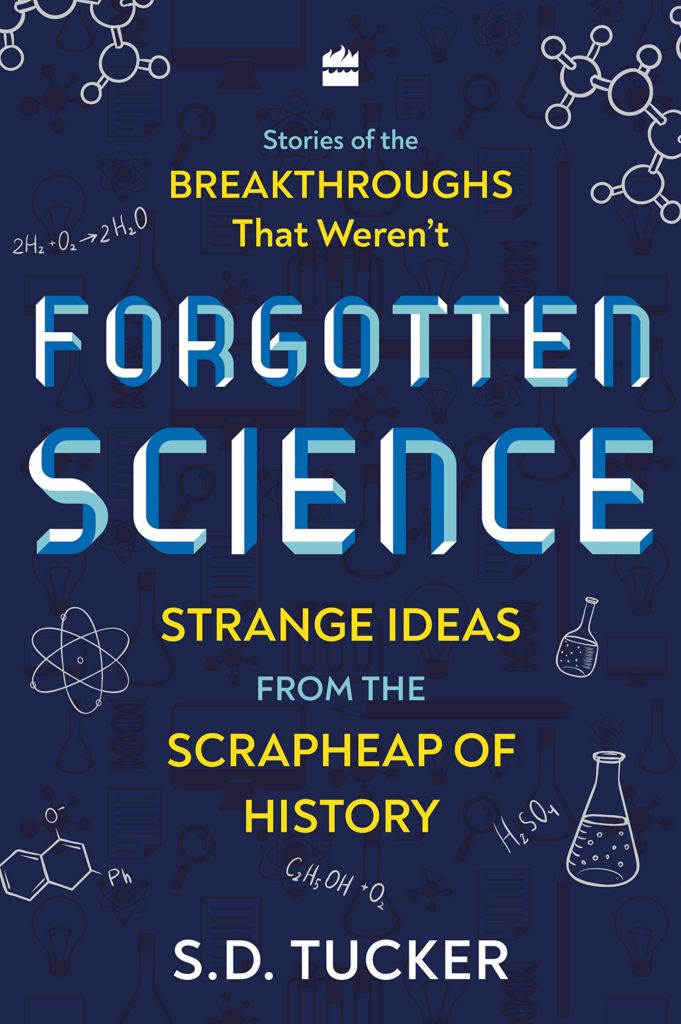

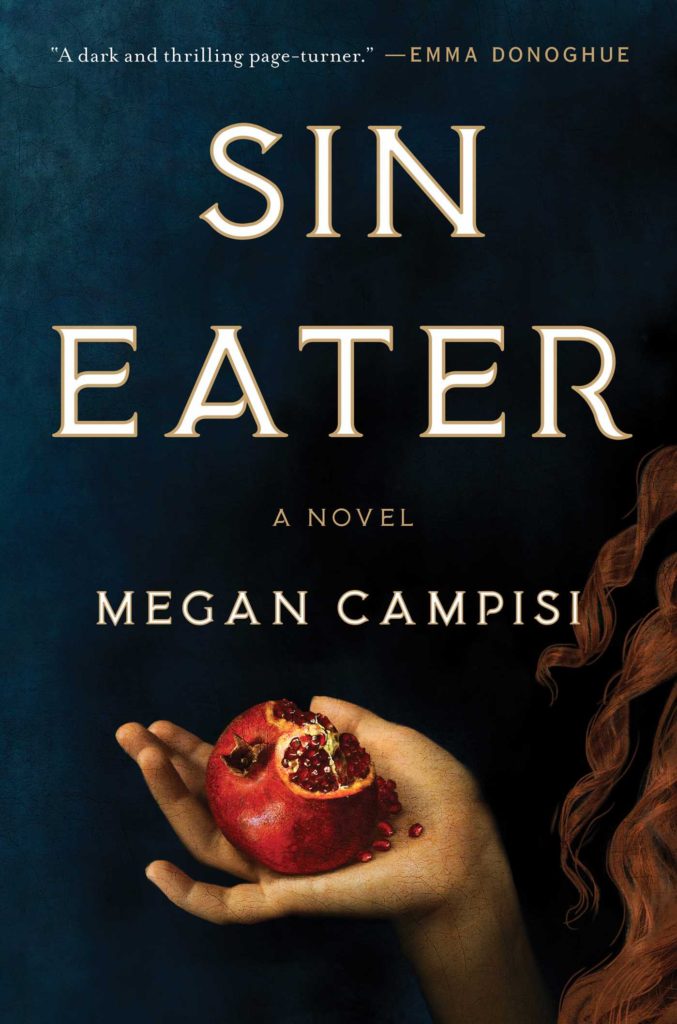
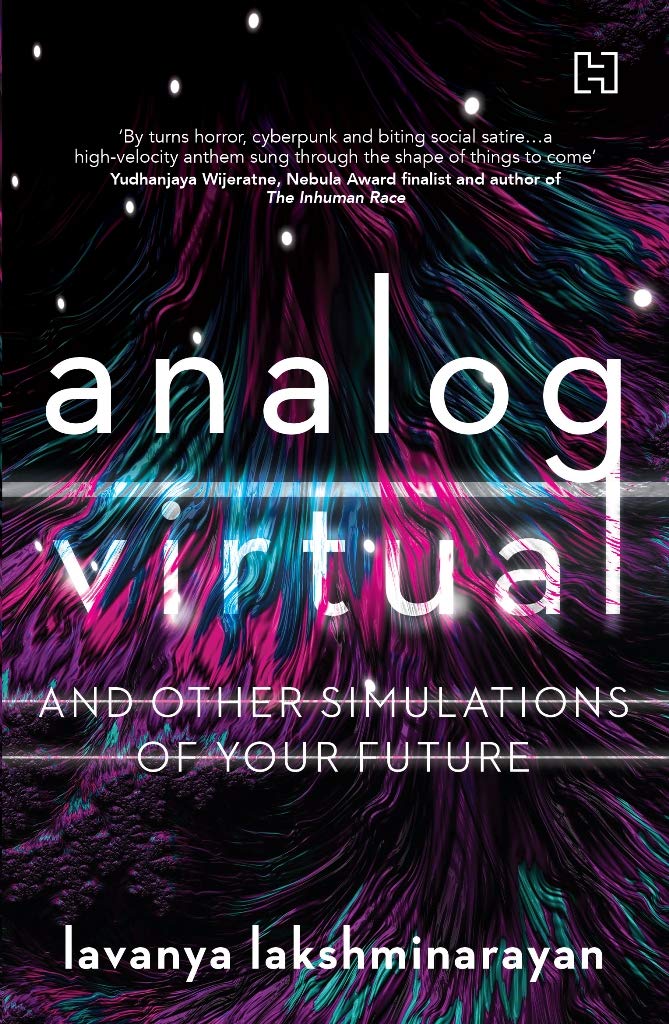
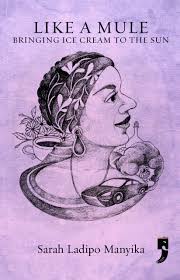
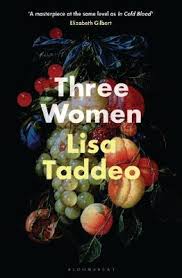
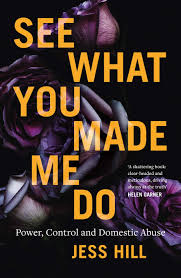
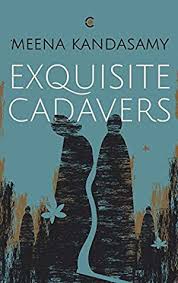
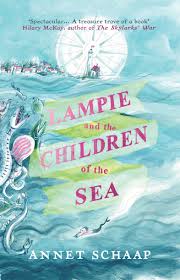
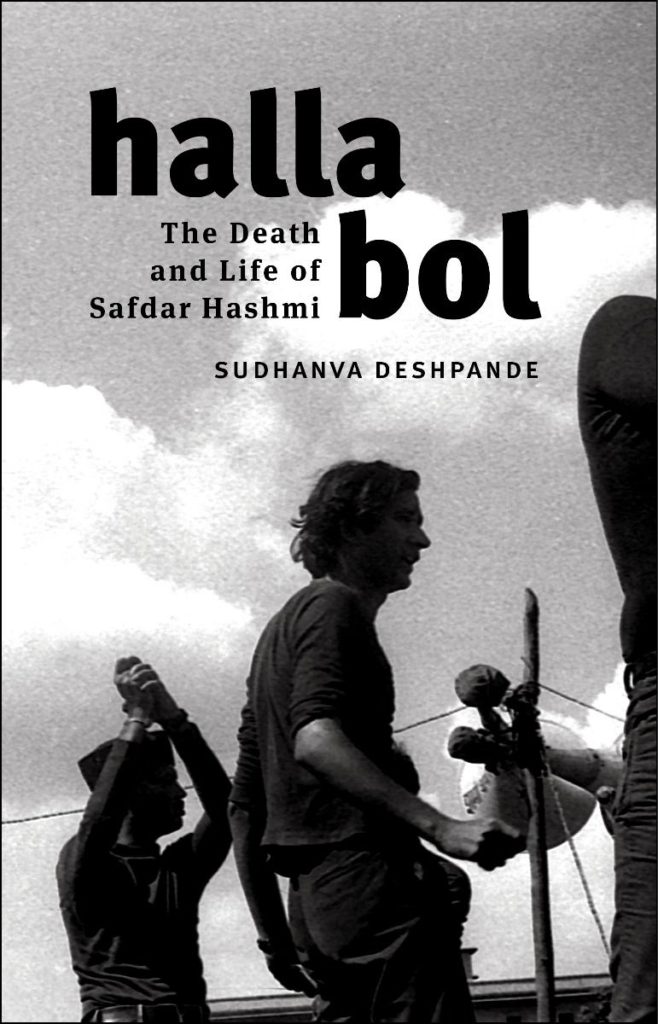
Sudhanva Deshpande’s Halla Bol: The Death and Life of Safdar Hashmi is an account of the left activist Safdar Hashmi who was brutally murdered on 1 Jan 1989 at Jhandapur, Ghaziabad. Safdar Hashmi was 34 years old. Jan Natya Manch was staging a 30-minute play called “Halla Bol” on the road when the actors were interrupted by some politicians who wished to cross. Hashmi requested them to return in a little while. They seemed to listen and turn away except they returned bearing iron rods. They attacked the troupe leaving Safdar Hashmi very badly injured. He had been hit on the head many times. By the time of his death Hashmi had been hugely influential in street theatre with his group called Jan Natya Manch or Janam. He was a member of the CPI ( M).
In Halla Bol Sudhanva Deshpande recalls the earth-shattering events of the day. He was one of those who took the injured Safdar Hashmi to hospital. Working “backwards” from the opening scene of the murder of Hashmi, Sudhanva Deshpande recalls the main highlights of Safdar Hashmi’s life. Both men share similar qualities of being street theatre practitioners and a political activists. So while this book is promoted as a biography, it falls more into the category of a memoir and an unusual one at that — a collective memoir. Through much of the book Deshpande is able to rely upon memory as in many instances he bears witness to the events that occured but for many others he interviewed many people who knew Safdar Hashmi and/or had worked with him. There is a veritable army of people mentioned in the text and acknowledged at the end of the book too. It is a democratic inclusiveness of all those who knew Safdar Hashmi — as a man, a colleague, a relative, a theatreperson, a political activist etc. Deshpande’s account while highlighting that Hashmi used the arts for communicating his politics. As cultural critic Kunal Ray mentioned in his review of the book, “Street theatre is political. It began as a workers’ movement against capitalism. As a medium of performance, it facilitates direct conversation or confrontation with the audience or onlookers defying the restrictions and gentility of a proscenium space. It also undermines the hierarchy of the performer and the audience. Street theatre is democratic and Safdar Hashmi believed in a vision of the arts that is secular and people-oriented. He also believed in an art advocating social justice. It is therefore impossible or perhaps unpardonable to think of Safdar without his politics.” ( Kunal Ray, “Review: Halla Bol – The Death and Life of Safdar Hashmi by Sudhanva Deshpande”, Hindustan Times, 24 April 2020) . Interestingly enough National Street Theatre is 12 April which is also Safdar Hashmi’s birthday.
Halla Bol is an interesting testimony of a life well lived and rudely cut short by hooligans. It may be considered a biography but is more of a primer on theatre in India with a fascinating account of the evolution of street. More importantly an amalgamation of traditional forms of artistic expression that was combined with drama for a public performance. Today we take this for granted, whether watching a play, reading a book or even watching a film. In the 1980s it was still a brand new concept and had the desired impact upon the audience, mostly workers for Jan Natya Manch performances, and who suddenly did not feel alienated any more from cultural performances as plays like “Halla Bol” used vocabulary, situations, dialogue etc that was familiar — “Just like us”. Safdar Hashmi was undeniably sharp, intelligent, a hugely gifted artist, a visionary and knew how to combine smartly political acts with creative expression. Yet there are moments in the book which make it seem like a hagiography since all those interviewed or reminiscing about Safdar Hashmi continue to miss the man fiercely. In a biography one expects there to be a distancing between the author and his subject offering a perspective to the reader but this does not always happen in Halla Bol. Nevertheless this book is a treasure trove of memories, a people’s history of theatre movement in India, evolution of street theatre, documentation of various attitudes towards performing theatre, empowering future generations of theatrepersons by enabling them to be confident in borrowing elements from traditional forms of theatre/ folk art and making it their own. Within months of its publication the book has been translated into quite a few Indian languages. It is a seminal book on Indian theatre.
Read Halla Bol
4 May 2020

I read Gaël Faye’s book more than a year ago. Loved every word of it even though the story itself is horrific about the Rwanda genocide. The genocide began in April 1994 and lasted 100 days. Some 800,000 people, mostly Tutsi, were killed. Gaël Faye’s French-Rwandan wife’s Tutsi grandmother was also killed after taking refuge in a church. Small Country is a heartbreakingly painful story to read but it does not leave you in a hurry. It is magnificently translated into English by Sarah Ardizzone. For ever so long I had wanted to meet/interview Gaël Faye. In Jan 2020, Gael Faye was invited to attend the Jaipur Literature Festival. I did get the opportunity to meet him at the French Institute in Delhi. Unfortunately, due to a set of unusual circumstances I was caught in a traffic snarl and could not make it to the venue in time. Instead Isabelle Jaitly stepped in to interview Gael Faye on my behalf. She asked him the questions I had drafted and added some of her splendid ones as well. The interview was conducted in French since they are both fluent in the language. Isabelle has translated it from French into English. It has taken time as it is a long and complicated process. It involved first transcribing the interview from an audio recording and then translating it into English. The translation was also delayed by factors beyond our control — the Covid19 pandemic. It effectively forced the French government to cancel the Book Fair in Paris where India was going to be the guest of honour. Isabelle who works at the French Institute in Delhi was inundated with first the planning for the fair and then helping with the aftermath. It has been a surreal year. So I am truly delighted to publish on my blog this extraordinary interview with an extraordinary singer-cum-author and an extraordinary backstory!
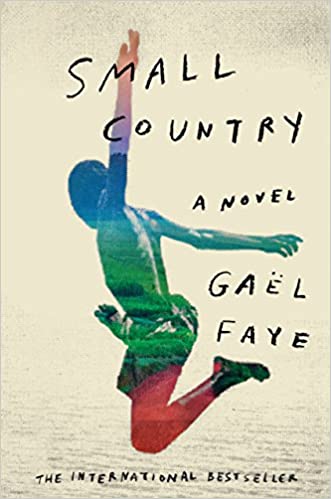
Gaël Faye is an author, songwriter and hip-hop artist. He released his first solo album in 2013, with his first novel following in 2016. Born in 1982 in Burundi to a French father and Rwandan mother, Faye moved with his family to France in 1995 after the outbreak of the civil war and Rwandan genocide. His debut novel Small Country was published to international acclaim. Written in French it has been translated brilliantly by Sarah Ardizzone. A lot must have been called upon her to invest in this translation. To delve into another language, capture the rhythms and transfer them seemingly seamlessly from the language of origin to the destination language is never an easy feat but Sarah has done it brilliantly. I do not know French but am familiar with it sufficiently to know the softness of the spoken word in French is very different to the cadences that English has to offer. I do not know how else to say it since I only know English. Yet, while reading Small Country I could not get over the fluidity of the prose. At times one forgets it is a translated text that one is reading.
Gaël Faye is a poet, rapper, musician, so rhythm probably comes easy to him. It is in all likelihood a part of his being, his DNA. Those who have music in them walk, talk and breath music and rhythms. If you witness such musically talented people, then it is pure joy to see them move and talk. Even an ordinary conversation with them takes on a precision that is delightful to experience. And somehow this oneness of spirit with music makes them seem like free spirits too. It conveys itself beautifully when such talented souls express themselves. Murakami says in his conversations Absolutely on Music that rhythm is important the text.
In the case of Small Country the boy-narrator comes across as a medium for sharing many of Gaël Faye’s own experiences or perhaps events he has witnessed. Using the fictional literary device tends to distance the author from the event. Yet using the first person to narrate events makes it so personal but also continues with the fictional deception of something so horrific. The only time the mask seems to fall is when the narrator recounts his mother’s witnessing of the murders in Rwanda. And that is not even a technique. It just comes across as someone who must at all accounts convey what his mother witnessed. In fact if you read transcripts of testimonies of women traumatised by conflict, the tone is this. The only difference is that while the mother in the book never really slips into the third person, all women survivors of a conflict situation always speak in the third person especially when they come to that particular point of describing the actual trauma. It is extraordinary but this is a fact that has been documented over and over again through decades of research on gender and conflict. While absorbed in the story the turn of events are not questioned even the deadpan monotone manner in which the mother tells her story at the dining table. Even her slow descent into a “madness” is done brilliantly. It is later upon closing the book that so many questions come to my mind. For instance, this eye-witness account has to be true. Probably the mother is an amalgamation of many such witness accounts or perhaps it is someone extremely close to Gaël Faye. Then I wondered how on earth did Gaël Faye capture this deadpan manner of narrating the genocide? Did he record it? Did he revise this portion? The translation too would have been tough leaving its mark on the translator. This is not a passage easily forgotten.
The fluidity of the prose is breath-taking. It is meditative so when the long passages on reading appear, the mind is sufficiently lulled to appreciate every moment of that experience…a trance-like space that seasoned readers will recognise. Then it is explosively disrupted with the accounts of lynching, the stench of death, hatred and sheer ugliness of the revenge violence unleased everywhere. It is frightening.
The maturity of the boy-narrator to express himself so clearly in his interior monologues can only come with time. A layered narrative if there ever was one. It is as if the adult-boy is reflecting back on the past without in any way undermining what he saw as a 10/11-year-old boy. It is a tough balance to achieve. But I often got the sense while reading Small Country how did Gael know when to stop layering the memories? My apologies for intermingling the fictional and the real experiences but there are some moments in the book that are too real to be ever imagined by a sane human being. The description of the mother coming upon the rotting bodies of her nieces and nephews that her hand goes through the pieces while she attempts to gather their remains for a decent burial. Once the book is read the images of the genocide and the slaughter of the crocodile for a birthday feast merge into one. I had a zillion questions for Gael. So when presented with an opportunity to interview him, I posed some of them.
Here are lightly edited excerpts of the interview conducted by Isabelle Jaitly and Jaya Bhattacharji Rose.
1. Why write a novel, rather than a long poem?
That’s a form I had never tried and I had been wanting to write a novel for a long time. And as I already write songs, which are for me some kind of poems, I felt there was a certain limit to this form. At the same time I imagine that this novel is in a way a long poem, because I tried to introduce poetry in it as much as I could, as indeed I try to put poetry in everything I write.
Was it unsettling going from a very constraining form to a very free form?
One has to find one’s bearing. I used some ‘devices’ to help myself in this. I wrote letters inside the novel; the narrator sends letters to someone and these letters acted in a way as milestones, which gave a sense of time and frame to the action. A little bit like rhymes in a song. That said, one never knows how to write a novel, it’s through trials and errors.
2. What do you prefer: prose or poetry?
It depends on the mood… I like to navigate from one to the other. But in a way, poetry is not a form in itself. Poetry can be found everywhere. There is such a thing as a prose poem! There is no tight limit, no frontier between the two.
3. Can reading a book change a person? How do you think your book may have impacted others?
Yes, a book can alter the way you see the world, alter things within oneself. I have been through it, and I imagine others have as well. About my book, it’s difficult to speak on behalf of my readers, but from what I have seen through the feedback I have got, it has helped many people unlock silences in their families, or admit things to themselves that they have been able to own, like the experience of exile, or a trauma from the war or genocide. I have received these kinds of feedbacks. In a lighter vein, many people have discovered a reality they had no idea about though my novel. I have received feedback from Afghan readers, from Iran. But not from India, and I am looking forward to it.
And you, have you ever been changed by a book?
Yes, and even by several books. One author who had a great influence on me is René Duprestre, from Haiti. I was overwhelmed when I started reading him. He was for me like a mentor, a sort of Pygmalion. Another book answered many questions I had in my childhood, about my metis, the book of ‘peau noire, masques blancs’ (Black Skin, White Masks) a book by Frantz Fanon, a writer from Martinique. it helped me come to terms with my origins without being in conflict with them. And the list can go on. I go on reading amazing books, which in a way change my outlook. But the books we read as teenagers have a very strong effect on us. As teenagers, we are in the process of being formed, so my strongest emotions as a reader happened during that time.
4. Was it difficult to write about the genocide?
Not really. I spend part of the year in Rwanda, I come from a family who went through the genocide, who are survivors. We live with this. And I find that my novel, on the contrary, considerably minimizes what happened. I didn’t open a wardrobe full of memories I wanted to forget. These are things with which I live, because around me the society lives with it, the society in Rwanda lives with the genocide. So the biggest difficulty for me was to make this part of history accessible to those who have not gone through it. So, in a way, to bring it to a universal level. And avoid thinking: this is a genocide that concerns a far away country in Africa, so it’s not my story, it’s not my business. I wanted to make this story a topic of discussion to anybody anywhere
5. What about the pain?
No, there was no pain. I am always surprised to see how people want it to have been painful. No, this is work, so there are days when it’s harder than others, but not emotionally. It is painful for the narrator, but not for me, I am the writer! It is my job to make it feel real, to give the feeling that for the character, there are doubts, there is pain and suffering. But me, as a writer, I sit at my table, and some days the writing comes easily, and I am pleased, and some days, I am depressed, because I haven’t been able to express my thoughts the way I wanted. This is the daily life of any writer. It may be surprising, but I wrote this novel with a lot of joy, a real lightness. Only one scene was difficult for me to write, and that is the scene of the mother being violent towards her daughter. It wasn’t easy, this scene, because I have children, and somehow I did a transfer, of a parent hitting their child, and that was probably the hardest scene. Of course the scene of the mother who comes back from Rwanda and, sitting at the table with her family, tells about what she has seen there, that was not easy, but here again, it so much falls short of what really happened, of what I hear everyday, of the story told by those who have survived, that, in the end, writing about it was not as hard as one could think. The hardest for me is to find the form through which to express all this. The ideas are there. There are so many topics I want to write about in my songs, in novels. but the hardest for me is to find the angle, the right angle. And this, you can not learn, you have to try out, and that’s always the hardest thing, whether you write a song or a novel. Let’s say, I want to write about peace: It’s so cliché, everyone has written a song about peace! But actually, nothing is ever cliché, you just have to find the right angle. Same about love.
So what may be surprising here is to see that this novel is not an autobiography, it is a novel. Although the title Small Country refers to one of your most popular songs, “Petit Pays”.
Yes, that’s right, it’s not an autobiography. But here again, it’s complicated… I think every novel is a form of autobiography. Here, there’s a great closeness between me and the character: his origins, the context in which he spends his childhood, what he goes through during his childhood, this time of war, and indeed I have gone through this myself, the transition from a time of peace to war… but if you go into details, what happens to him is not at all what happened to me. Of course I used my feelings at the time to write about him, but everyone does that when writing a novel. It’s a material, and everything becomes a material.
7. What prompted you to write this book?
First it’s the frustration of not being able to put all this in a song. I wrote a song called ‘L’ennui des après midi sans fin’ (‘The boredom of never ending afternoons’), which was very long, with a long text, and I had the frustration of not having said everything: about childhood, about the time of insouciance. So that’s how I started the novel: I wanted to expand on this song. Then, there were the events, in my area of Paris, the attack against Charlie Hebdo. Suddenly, there were scenes of war in Paris. It took me back 20 years. Hearing the Kalashnikov, the atmosphere of fear, or terror even. I lived for two years in the war. So there was a feeling of déja vu, a feeling well buried which came back in the everyday setting of Paris, it was very strange. That also fed the desire I had to write about the cocoons one creates around oneself. In the novel, there is a space that is that of the impasse (dead-end). This is a symbolic space for me: it’s the space where one withdraws, a space which is a cocoon, and at the same time this space becomes a trap. So there’s a swaying between the two. And to me, life in France has this feature: a mix between the cocoon, the desire to see the world through an idealised typical image, as if everything is fine and going well. It creates a distance with the world and its violence. At the same time, the world and its violence catch up, because there is no frontier between human interactions, and a conflict that happens at the other end of the world can impact France. So there was this ambivalence. And this child, in the novel, finds himself in this desire to create a distance between him and the violence around him.
8. Why do you use a child, a boy-narrator, as a literary device? Does it make it any easier to cross boundaries within a disintegrating society and offer multiple perspectives that only a child can offer –more or less without judgement?
This too was through trial and errors. At the beginning, I wrote the novel through the voice of an adult, and actually this voice still comes through here and there. Finally, I chose the voice of the child. It gave me an angle, because it allowed me to unfold the story through the eyes of a character who doesn’t know the environment he is in, more than the reader. Adults tend to always be one step ahead. The child is innocent in the political environment; he will discover it at the same time as the reader. That allowed to be didactic without showing it. And it was essential for a story that speaks about a country, Burundi, about a history, the history of the Great Lakes region, that nobody knows anything about. This way, the character goes forward at the same time as the reader. This way I don’t have to explain and justify feelings and motives. Adults, especially on the issue of ethnicity, find reasons to explain even absurd situations. I liked the naive point of view of the child, who will ask questions, because he doesn’t understand, and actually there is nothing to understand, because it is absurd. This is what comes through at the beginning with the explanations about ethnicity being divided according to the shape of their noses. This is a reality. But it’s absurd of course Children don’t find excuses. They look at the world as it is.
Beforehand, I wasn’t conscious about it, but now, I am very aware of how much the reader looks for the writer in a book. It think it is a mistake (a flaw). Maybe it goes with the society we live in, where everyone stages himself, stages his life, this world of reality shows… for me, a novel is a novel, it’s a story. Whether the writer has lived this story or not, what matters is whether one is carried away, touched by the story. Being invented doesn’t, for me, affect the power of a story. But I do wonder… my book has been translated in more than 40 languages, I have travelled a lot, met a lot of readers, and this question keeps coming back.
10. If people believe so much that it happened to you, it’s a compliment to the power of conviction of your writing.
Yes, it maybe a compliment, but what if it hadn’t happened? What does it take away from the book? If everything had been invented from beginning to end, for me that wouldn’t take anything away from the book, from a story. Actually I am very shy about my life, I don’t share anything about it. Unless someone is an historic figure, like Mandela, or Martin Luther King, I don’t feel there is a point to write an autobiography, according to me at least. And real lives are always so much more complex that lives in novels. If I wrote about my life, nobody would believe me, because my life is 100 times more complex. A novel allows to give the broad lines, so that the reader can identify with the character or the story. Going into complexity, one looses the link we have with the reader. I believe this is the role of artists: what is the common denominator between human beings, that allows to bring human beings together. These are often banalities, such as love, friendship, hate, war, things that are experienced everywhere. The story has to be simple. If you go too much into complexities, you lose the distancing. And this is not what a novel is about; at least, it is my point of view.
11. With the intentional blurring of the lines between the lived and the fictional landscape, it becomes hard for the reader to separate the identities of the boy-narrator and the author. Why did you choose an opening to the novel with a bar scene, reflection and then a flashback to a conversation between father and son before plunging into a conversation? Why not begin the novel straightaway? Why the artifice? It is not as if it any way eases the shock and distress at seeing the violence erupt.
It is not a device. The voice of the adult at the beginning comes back at the end. I did it to speak about something that is close to my heart: the feeling of exile. If I had started with the voice of the child, this feeling would have not been there, and I wanted it to hang over the novel (suffuse?). I wanted it to be a novel about exile. Because I would never have written a book, if I had stayed in Burundi. I feel this very deeply. It is the distance with my country that allowed it. Actually, when I went to live in Rwanda, went back to the region where I spent my childhood, the writing dried up. I couldn’t write any more about the country, the environment: it was here, under my eyes, and I needed the distance. It’s like love letters. It fills a vacuum. Writing for me had this function for many years. So I wanted there to be a character that made the reader feel certain things. This character says things that are essential, for example about exile being a door that is left ajar. Saying that the exiled person is not the one who decides to leave, but the one who has to flee. Another important aspect is that we know, we guess from the beginning that this child is going to be confronted to war, and that either it will end badly for him, or he will have to flee. That’s what happens. But I wanted to show that the region I come from is not an open sky cemetery. Yes, there is war and violence, but life goes on. Businesses spring back on their feet, they go on. So it was important for me that the character should leave, and also come back. Africa is not a continent that the character leaves, and nothing else happens, it falls into oblivion. The link with one’s past is always there. So it was important for me to have this voice, this point of view too in the novel. It also shows, through this, what happens to a child who goes through all this, what kind of an adult he can become. If one stops at childhood, there is no hint about what this child may become later. And I am passionate about imagining the trajectory of people, where they come from and what they become. In my family, people have had incredible destinies. Born in a village, with nothing, they go on to live in world capitals, do long studies, get jobs. I am always fascinated to see how, in a few years, one can change one’s condition. So, emotionally, I find this interesting.
You say we can be changed by a book. What changes do you hope to see though this book?
My hope is simply to make life in Burundi human and tangible. It’s not just a statistic. Burundi, Rwanda, these are countries one only see through the prism of war and violence. So obviously the point of view is distorted. One cannot imagine that families there may live normal, simple, happy lives. There are no novels about Burundi. I certainly have never seen one. So this is like a manifest: we existed, we had simple, banal lives. I wanted to give it a voice. It’s not much, but it’s already something. I want to remove the exotic, the set images, set ideas. I am part of a new generation of writers writing about the region. And as such, we constantly have to go back to explain things from the beginning. We have to explain the history of the place, because it is unknown. When I got an award in 2016 from high school students (Prix Goncourt des Lycéens), many young people told me they didn’t know about the Great Lakes region. The hope is that one day we can write stories without having to go through this didactic process. I hope we will allow this to happen for the younger, next generation… They will be able to write about lighter, more banal stories, love stories, and science fiction.
12 Has the success of Small Country been paralyzing for you?
Writing has moments of epiphany, great joy, where I feel: this is why I write! But it is also great suffering. You have to give a part of yourself, to put part of yourself on the line. I need this to feel that the work is sincere. This is probably due to the fact that I started writing for reasons that were not light reasons: war, being a witness etc. So my pointer is always this: Am I being sincere? There is already so much noise on this planet, everywhere, non stop. Why add to it? I need to feel that my writing is not gratuitous. If I take the attention of people, it is to bring something to them, not to say, hello, I exist. It is so tempting today to exist just for existing. When we open a book, we try to create silence around us, in us. Great songs are the same for me. They bring you something that you can’t hear otherwise. The artist has to fight the urgency. We are pushed into it. But it’s like a child who needs nine months to be born. The artist needs a gestation period which cannot be dictated. It’s only an intimate feeling that can tell us that we are ready, we have found the right angle, the right voice. So I know that the process I am in at the moment, of writing a new novel, is complicated. There is an expectation: but that, I have to forget about. But mainly it is complicated because I want to put myself on the line. It’s fascinating, but it’s crazy, so much work! Put oneself on the line and at the same time remember that nobody is waiting for it, it remains something superfluous. Radicalism is dangerous. There is no radicalism; the most radical thing in the world is to find a balance — take it from a metis person!
17 April 2020
…it was during a period he had so much time on his hands that he felt that time had stopped.
How could time have stopped?
‘Because,’ he said, ‘and you will understand this when you are older, sometimes you feel that everything around you has come to an end. You feel that you are completely alone, that time is frozen and that you are invisible. At first, you might feel exhilarated by the sense of freedom, but then you’ll be frightened that you are lost and you will never be able to go back.’
He explained that when he first felt this, he had been isolated and afraid and had prised open his watch case to verify that time was indeed passing. The rhythm of the watch might have been imagined. Sound was not enough, he needed to see and touch it. It was the first time that he had dismantled a mechanism. The turning wheels, ticking each second away, had reassured him.
It was then that he had comprehended the importance of time.
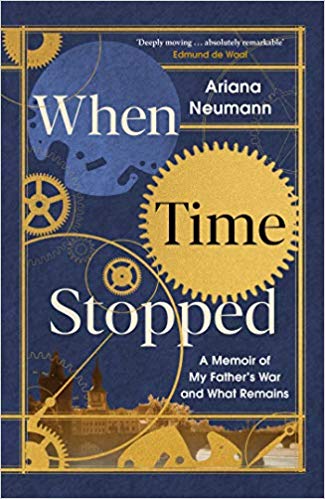
Ariana Neumann was raised in Caracas, Venezuela as a Catholic. Her father, Hans Neumann was an established businessman who was also seen as a patron of the arts. Ariana was Hans’ daughter by his second wife. Ariana had a fairytale upbringing. Living in a large home, stuffed with beautiful pieces of art. She had loving parents and had everything that she desired. It is evident in the book trailer which is based on a series of home movies.
Ariana Neumann’s debut book When Time Stopped is a memoir about uncovering the truth about her father’s past. Despite the idyllic childhood he gave her, there were certain topics that were taboo. One of these were questions about his past. It was during a “spying” game that nine-year-old Ariana had created with her friends that one of her friends/spies reported that they had witnessed her father carrying a cardboard box into the library. Later in the day she decided to investigate for herself. Ariana found the box. Ruffled through its contents. Found it contained only a slim collection of papers. Most written in a language she could not comprehend. Then she spotted an identification document with an unrecognisable name — Jan Sebesta– and a young man’s photograph, an unmistakable likeness to Hans, and stamped below it was also a picture of Hitler. She was startled. She ran to her mother distraught at her discovery. Her mother placated Ariana and told her not to worry. Yet it shook Arian’s world realising that her father was not who he was. After that the box disappeared. She never saw it again. Until her father passed away and she was clearing his drawers. She then discovered the box once more. This time it was stuffed with more papers, mostly in languages she could not read. Equally puzzling were the nightmares her father had when he would scream aloud in a language Ariana could not understand.
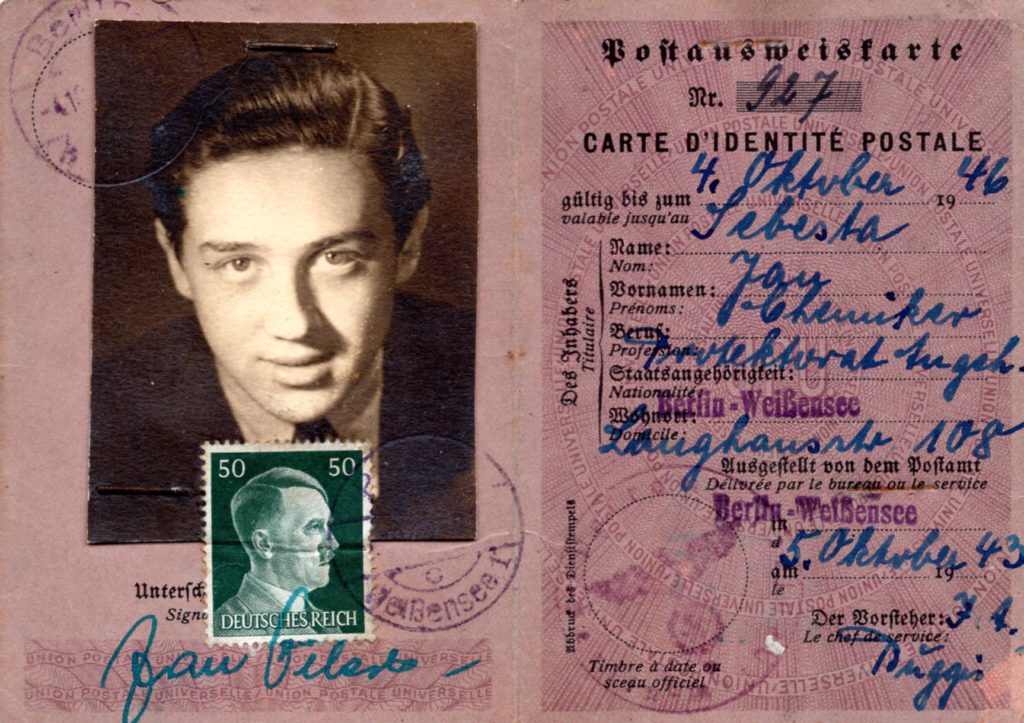
When Time Stopped is a memoir that reads like a well told mystery story as Ariana uncovers the truth about her father. A beloved father who was exceedingly busy and built an extraordinary business empire established first in the paint industry. A father who was so immersed in his work that even his own daughter had to seek an appointment with his secretary in order to have some time alone with him. A father who threw himself into his work that he was effectively able to compartmentalise his life and seemingly not let anything deter him. It was this father whom she had persuaded to visit Prague as part of a business delegation in the early 1990s. She had accompanied him. At the time he had let his mask slip briefly when broke down at the fence of Bubny station.
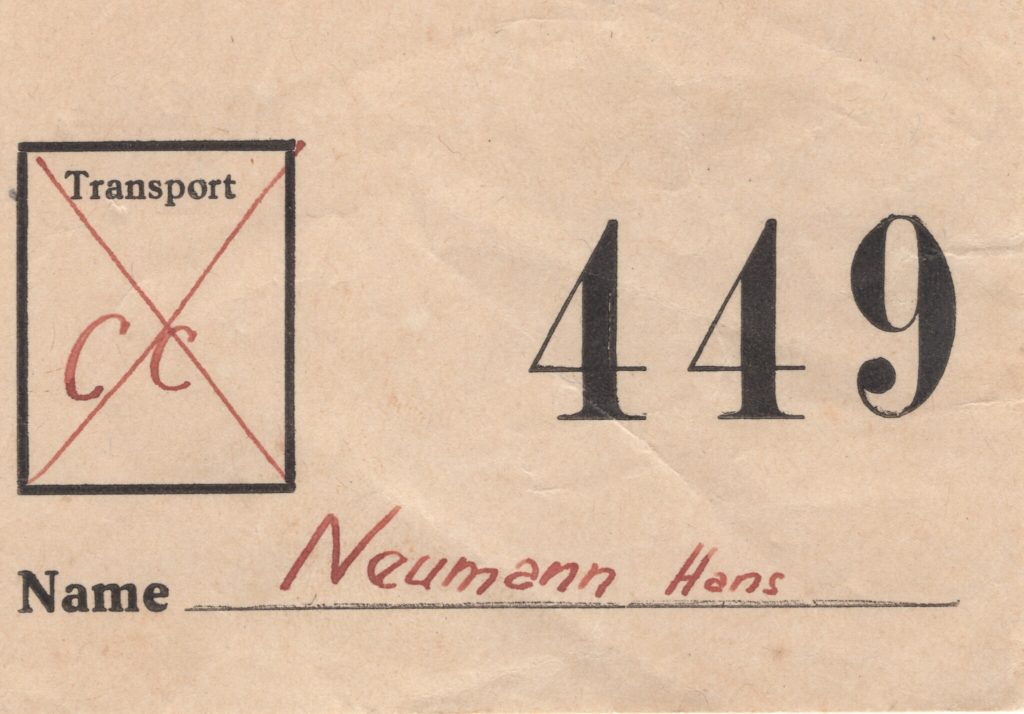
When Time Stops is a fascinating account of how Ariana uncovers her father’s past, discovers he was a Holocaust survivor, who had lost twenty-five members of his family in the pogrom conducted by the Nazis. He had managed to escape by extraordinarily living in Berlin, under the watchful eye of the Gestapo, as a Christian. He was convinced that “the darkest shadow lies beneath the candle”. From there he fled to Venezuela with his older brother. Unfortunately his parents and extended relatives perished in the gas chambers. The Neumann’s had a thriving painting business in Prague. They were Czech Jews whose lives had been upturned with the invasion of the Germans in March 1939.
While researching for this book, Ariana Neuman discovered that she had relatives spread acrosss the world. She contacted them. Also discovered that there was a list of Jews who had perished during the war posted on the walls of a synagogue in Prague. She found her father’s name that had a question mark against his death. When she called and asked him about it, he merely said, “I tricked them”. Ariana also discovers that her paternal grandparents had been sent to a concentration camp that ordinarily operated as a labour camp so rules governing its administration were relatively “freer” than the other camps. Hence her grandparents while being incarcerated inside were able to send letters and parcels to their sons and at times receive illicit parcels containing packets of food and bare essentials. Extraordinarily it is the emergence of these letters after more seventy years that for the first time reveals to many the manner in which these camps operated. They had a well-defined economy and administrative structure. Ariana’s grandparents letter shed light on these internal mechanisms as well as some of the despicable horrors, many of which they were unable to recount, yet alluded to them. Ariana stumbled upon these parcels while investigating into her past. As she reached out to newly found relatives she discovered that they had similar boxes of papers as she had. These contained letters and pictures. Using the services of a Czech translator, Ariana painstakingly translated and read all the correspondence. Then filled in the gaps with her research. Result is this book. This extraordinary memoir.
When Time Stops is about Ariana discovering that the stray remarks fellow students made at school and university questioning her Catholic upbringing and at times bluntly saying she was a Jew were all true. They knew. She did not. It is more than just the passionate love of her father’s for his 297 clocks that he so carefully cared for. He had his own workshop in a windowless room where he tinkered with his precious watches, some of them going back a few hundred years. Yet of all the beautiful pieces he owned, it was an ordinary dull gold one that he was most fond of as it reminded him of the time piece his own father possessed. A link that the daughter put together after her decades of investigation into her past.
While being an fascinating account of a life, When Time Stops is also a horrifying read for the many parallels it has with modern life. Many countries today are questioning the citizenship of their people and creating scenarios that are eerily similar to those described in this book. It is worth reflecting upon. How much of the past needs to be shared and kept alive through memories as a lesson to future generations on the horrors that humans can inflict upon their own? How much of the past that is kept alive is actually used by future perpetrators as case studies? It is a tricky balance to achieve in this grey and gloomy world. Having said that When Time Stopped is worth reading for it stands out as a very well written memoir, balancing extensive research with the personal stories.
*The pictures used in this blog post have been published in the book and on The Israel Times website.
9 March 2020
The publisher, Stefan Tobler, very kindly sent a reading copy of the award-winning Love that I read in one fell swoop. I could not put it down. It is set in the space of one night when a mother comes home tired after work and her nine-year-old son cannot help but wonder how his mother intends on celebrating his birthday the day after. Instead curiously enough mother and son wander away from their home and end up drifting through the night separately with their own adventures to tell. Here are edited excerpts of my letter to Stefan Tobler written in a dreamlike state upon finishing the novella. Read on.
Dear Stefan,
Thank you for sharing the extraordinarily novella, Love. I read it in one fell swoop. Love was impossible to put down. There is something so remarkably restrained about Hanne Ørstavik’s writing. It defies imagination that the love between a single mother and her soon-to-be nine year old son can be so complicated but it is just that, isn’t it — complicated? Hanne gets into the mind spaces of the two characters in a way that is extraordinary for whatever they are thinking about — the mother about finding love and companionship with another man and the son weaving a simple dream about a birthday cake. Hanne captures their dreams so well. Their inner thoughts. A small detail shared at the beginning of the story is that the mother is preparing a meal for her son. She is caring. Yet one cannot help wonder after the story is over “is she?” More so how can a mother, however tired she is, forget to check in upon her son and tuck him into bed? If she had then the story would not have progressed in the manner that it did. And then the reader is immediately forced to correct the harsh judgment of the mother’s character for it is uncalled for. The mother too is entitled to her me-time. As for the boy, he does have quite an adventure. It is like a small adventure tale for children as found in classic children’s literature tucked into a grown-up tale. So while the story about the child is being told it is like a good old-fashioned story with details about his dreams; it is so expertly told that it shakes the reader when the passages about his mother are slipped in. I do not know even know when the merging of the two adventures begins in the text. It is so smoooooooooooth! What I found incredible was how the arrangement of the text echoes real feelings of a mother and child. There is an interweaving of text while layering the emotions. After a while the two narratives merge into one not necessarily as a literary technique but the effortless merging of the two experiences in the same time but different places is quite extraordinary. Perhaps it is a feat of the fabulous translation by Martin Aitken. He is able to make it an easy read that at times in the destination language. At times one forgets that this is a translation that is being read and not an original work in English. If there are any interviews with him regarding the translation or any between the writer and translator, please let me know. I have not come across as any with specific reference to Love. I only found readings that they did together at NBA finals. What I would be curious to know is if Martin Aitken’s experience as Karl Knausgaard’s translator have had any bearing upon his translation of such a feminine novel. It is that particular intersection as a translator and deliverer of a writer’s fiction that I would be truly interested in knowing about? Also does gender really matter in the manner of writing and how does a translator make these nuances available or does he just focus on the task at hand? Ultimately the translator has to be given much credit too for creating such an extraordinary translation…and for me that is simply defined by the readability factor combined with the retaining all the particular cultural details that exist in the original text. I did find his Asymptote interview which is brilliant but does not answer any of the questions I have. I would like to hear/read a conversation between the writer and translator. I truly think it is needed. There are so many intersections that can emerge from this conversation apart from the 2-decade gap between the publication of the original story and the translation. More so when Indian literary prizes that recognise translations have a cap on the year of original publication and the translation into English. Originally one of the literary prize managements had insisted upon it being not more than three years since the original publication in a regional language. But under advice from publishers this year the rule had been extended to seven years but in all likelihood it would soon revert to three years as no one in the management could understand why translations took so long! To my mind the observation was so wrong as it was a) naive b) it was symptomatic of the neural translation age and the awkward machine translations available in real time and ultimately c) what would the organising committee have to say about books similar to Love that were published in India after a very long gap from the original publication?
Thank you for sharing such a beauty, Stefan!
Warmly,
JAYA